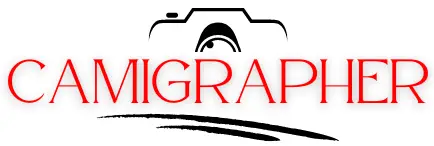There are many types of lenses available for taking pictures on stage. However, the best type of lens to use for clear stage pictures depends on the type of photography you plan to do. If you are primarily interested in taking pictures of the performers on stage, a wide angle lens will give you the most coverage. If you want to get close up shots of the props or the scenery, a telephoto lens will be better.
Contents
How To Get Super Sharp Photos Every Time With Any Camera
[ytvideo]
Different types of lenses
There are a few different types of lenses that can be used to take clear stage pictures.
The most common type of lens used for taking clear stage pictures is a zoom lens. Zoom lenses are a type of lens that have a capability to change their focal length. This means that they can be used to take pictures that are wider or narrower than normal. Zoom lenses are especially useful for taking pictures of distant objects.
Another type of lens that is often used for taking clear stage pictures is a prime lens. Prime lenses are lenses that have a single focal length. This means that they cannot be zoomed in or out. Prime lenses are best for taking pictures of close objects.
There are also wide-angle lenses and telephoto lenses. Wide-angle lenses are lenses that have a wide angle of view. This means that they can take a lot of pictures in a short amount of time. Telephoto lenses are lenses that have a long focal length. This means that they can take pictures that are far away from the camera.
Advantages and disadvantages of each lens
There is no definitive answer to this question as everyone’s shooting needs will be different. However, here are some general points to consider when selecting a lens:
– aperture: the larger the number, the wider the aperture, meaning that more light can enter the camera and be used to create an image. Aperture is often used to control the amount of depth of field in an image, which affect how closely objects in the foreground and background are rendered.
– focal length: the longer the focal length, the wider the image angle. A longer focal length gives you a wider perspective from which to shoot, so you can capture more of the scene in front of you. However, a long focal length can also give you a narrower field of view, so it’s important to choose the right focal length for the shot you want to take.
– resolution: the higher the resolution, the sharper the image. However, higher resolution also means that the image will take up more space on your memory card, and may require more processing time to create an image.
– depth of field: depth of field is the distance between the closest object in focus and the farthest object out of focus in an image. It’s controlled by the aperture and focal length, and can be used to isolate a subject from its surroundings or to create a blurred effect.
– weight: heavier lenses are usually better quality lenses, and are usually less likely to breakdown or focus erratically. However, they
Which lens is best for stage photography?
There is no one definitive answer to this question, as the best lens for stage photography will vary depending on the specific needs of your photography project. However, some general tips on lens selection for stage photography include selecting a wide-angle lens for capturing a wide view of the stage, a zoom lens for getting closer to the action, and a high-quality telephoto lens for capturing detailed images of performers and scenery.
What to consider when choosing a lens for stage photography
There are many factors to consider when choosing a lens for stage photography, including the type of performance you’re aiming to capture and your camera’s capabilities.
For live performances, a wide-angle lens will capture a wide view of the stage, while a telephoto lens will zoom in and provide a more close-up view. If you’re shooting video or still photos, a lens with a long focal length will capture more distant scenery, while a short focal length will provide a more intimate perspective.
Your camera’s aperture, or “f-stop,” is also important. The higher the number, the wider the aperture, which means the lens will let more light into the camera. Aperture is important because it determines the depth of field, or the area in front of and behind the subject that will be in focus. Aperture is also important for controlling the amount of noise in your image.
When choosing a lens, it’s also important to consider your camera’s sensor size and the focal length of the lens you’re using. Professional cameras typically have larger sensors than consumer cameras, which means they can capture more detail in an image. Lenses with a focal length of 50mm on a professional camera will have the same field of view as a lens with a focal length of 100mm on a consumer camera.
Once you’ve selected the lens that’s best for your needs, it’s important to understand your camera’s camera settings and how to use them to
Conclusion
If you want clear stage pictures, the best lens to get is a wide angle lens.
